
 By Myles McWilliams mcmcwill@loyno.edu
By Myles McWilliams mcmcwill@loyno.edu
Someone scrolling Loyola's website might be interested in finding what centers and institutes Loyola offers.
While scrolling, the Center for the Study of New Orleans may catch their eye. Or perhaps the Institute of Environmental Communication might look interesting.
But if they were to click on the link for either institute they would be directed to a dreaded "page not found" message.
That message, or worse - outdated information - is all too common for visitors of Loyola's website.
Many students have had trouble
with the university website regarding accuracy and functionality.
Mass communication freshman
Curtis Starks said his experience with the website has been “so-so.” For him, some information was easy to get, but all too often, it’s out of date or just impossible to find.
The task of updating and maintaining the university website falls to several different areas of campus. At the top of the pyramid is the university's web design team. They are responsible for keeping the website running and updating its code.
The Office of Marketing and Communication is responsible for the
website's look and usefulness, as well as many of the shared resources.
Maintaining information about individual programs falls to each individual department, who sometimes dedicate specific people to update their information. Other times it is just tacked on to someone's already heavy workload.
Currently, there is only one web developer who works to maintain the university’s website – Eric Schmidt.
“This is not the first time I have been a webteam of one,” Schmidt said.
Loyola University New Orleans • Since 1923 Issue 9 • Vol. 101 April 19, 2024
See WEBSITE, page 10
TECHNICAL DIFFICULTIES
Students express issues with university, course website accuracy and utility
Photo by Sophia Maxim, illustration by Zach Cesarini/ The Maroon
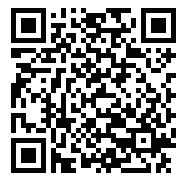
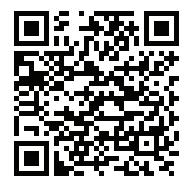
66. Turtles get this stuck in their nose
68. is letter repeats twice in Across 46
69. Against eating food with animal products
70. Main character in a certain wizard school
40. Fruit company that assisted with overthrowing the Kingdom of Hawai’i
43. Remember to check your _-Mail 44. “ e _____” a TV talent show with celebrity judges (i.e. Blake Shelton)
46. Stranded on a deserted island? Write this in the sand to alert any planes
48. 2022 Film about a blonde arti cially intelligent evil doll
50. “Want some cookies?” “No it’s okay _ ___.”
51. Reference to dialogue
53. College students carry these around at tailgates
54. It’s above you
55. Yes in French
56. Call this company when you get a at tire
58. Vermin that eat the weed in the New Orleans police station
59. Famous poet, _._. Eliot
60. Tiger Woods’ ex
61. Opposite of false
63. Lithuania, abbr.
64. Greek letter sigma in latin alphabet
65. Anti- ____ cream helps reduce wrinkles

DOWN
1. Animal: __; Noise: ____
2. Bone attached to the breastbone
3. Iron in the periodic table
4. ree inches from your band to your bust is this bra size
5. ___ de Muertos
6. Loyno vending machines should add Little Debbie Zebra ___
7. “Don’t make me drink alone. Don’t make me drink alone!” from ___ (2019)
8. Opposite of accused
9. Chloe’s mom on Dance Moms
10. St. omas Aquinas, abbr.
13. To impress
14. Natural Resources and Environment, abbr.
16. Novel by Candice Carty-Williams
17. Made something to law
20. It’s your fault that Mom and Dad did this
22. Itchy throat, cold sores, fatigue, etc.
25. Greta unberg and Leah omas are examples of environmental _______
27. Opposites of weaknesses



29. Field O cer, abbr.
30. Oprah’s “_” magazine
31. Overpowered, abbr.
37. e feeling of sorrow for others
Verb ending in -ing
All of a sudden, the lights __________ and a power outage came over Loyola. Everyone from __________ to __________ came out and __________ why the lights went out. People guessed it was due to students __________ or that someone __________ a wire. Burst! e people look towards the __________ and notice a __________ smell and __________ liquid oozing from the bathroom. “It’s the apocalypse!” Havoc __________ and immediately steals all the __________ from Iggy’s Cupboard. e students __________ to the ground and prayed to their __________. e end is near. Puzzle Answers on the Loyola
38. Volleyball term for a serve that directly touches the oor of the opposing team
39. Cow says ___
41. Lebanon, abbr.
42. Another way to spell Igor
45. Celebration in the ___, hosted by City Park
46. “I am ____ you if you don’t give me what I want!”
47. MLB player hitting ___
49. A lake lying between Kazakhstan and Uzbekistan
51. e joker’s girlfriend Harley
52. e planet we live on
55. Norse Name meaning “holy”
57. “Your ___ is really good and illuminates a green color”
60. e breakfast bowl in the Orleans Room is made of ___, tater tots, bacon, and cheese
62. __ plugs will be given out in Francis Lobby due to Construction Noise
67. Wide Receiver, abbr.
69. e main character’s name in “V for Vendetta”
71. A, E, I, O, U, and sometimes _

PUZZLES 2 April 19, 2024 THE MAROON ACROSS
National
for Public Health in the United States
and Devin Go To
Khalifa and Snoop Dogg
To frighten
Government
that is known
causing
in Latin American 12.
of
in the Hebrew Bible
Large
Tyler the Creator
Your
on a
19. “Bro I’m totally stoked!” 21. Name for a bathroom connected to a bedroom 23. To block out the 3 a.m. Mercy construction, she ____ her head in her pillow 24. “Cause My Baby ____ It’s __” by Dick Powell 25. Opposite of depart 26. Mark on
are in
1. Capture the ag, abbr. 4.
center
7. “___
Highschool” starring Wiz
10.
11.
agency
for
many coups
Son
Carmi
15.
armadillo; pronounced like “tattoo” 16. “Earf-_____” Album by
18.
pointer
computer, abbr.
medical products that
compliance to U.S. standards 28. Fans are angry with Taylor Swift due to her enormous 32. “Whatever You Like” by rapper __ 33. Touchdown Jesus but in this Brazilian city 34. Cat, dog, rat, etc. 35. __ Phil who put away Bhad Bhabie 36. Will._.am
37. Walking around due to stress and anxiety 39. ___&M
Apple
Google
1 2 3 4 5 6 7 8 9 10 11 12 13 16 19 23 22 25 26 14 17 20 24 27 28 29 33 38 41 21 30 31 32 35 36 37 40 43 46 48 34 39 42 45 44 47 49 57 61 15 18 50 51 52 53 54 55 56 60 63 66 59 62 64 58 65 67 68 69 70 71
Maroon App!
Store
Play
Crosswords and Maroon Libs by: Max Schweikarth & Kira Phillips
Verb ending in -ed School Buiding Dorm Building Verb
Food Item Verb Crystal
Verb ending with -ed School Building Adjective Adjective Plural Verb

Professor shines light on life incarcerated
By Elinor Upham esupham@my.loyno.edu
Sociology professor Marcus Kondkar said he thinks it is everyone’s basic civil responsibility to look at what is going on behind prison sentences and look at the people being put in prison.
“I think it's a little bit cowardly for us not to confront the consequences of these policies; these punishments have been given out in our names,” Kondkar said.
Kondkar has been working on The Visiting Room Project since 2016, alongside Calvin Duncan, a man wrongfully convicted of first degree murder in 1985.
“It's like the largest collection of first person testimonials of people serving life without parole in the world,” Kondkar said.
Loyola will host the project, which aims to create a space for people to have honest conversations about the nature of prison sentences and punishment, during Second Chance Month, a monthlong collection of events sponsored by the Jesuit Social Research Institute to
remove barriers and unlock opportunities for the tens of millions of Americans who have been justice involved.
“We just realized we had to get into the prison, get these stories out, record them, create opportunities for people to encounter them and start connecting the data with the full human beings behind the data,” Kondkar said.
Kondkar said he found studies showing the recidivism rate for people who were formerly serving life sentences or who spent decades incarcerated were less than 1%.
Recidivism refers to the tendency for a convicted person to commit a crime after having been released from prison.
Kondkar said that when he showed Duncan this data, Duncan was not surprised, as he had met the people behind the data. He knew who they were as people, rather than numbers.
“We kind of get stuck on the person who was convicted. And we don't get to see change, transformation,” Kondkar said.
According to Kondkar, it was these conversations with Duncan that led him
to the project in the first place.
“If we're going to understand the experience of incarceration, especially life without parole, we have to have a way of encountering it,” Kondkar said.
Kondkar said that the goal of the project is not to tell people what to think about prison, or even to critique prisons, but instead an invitation to sit with the idea of what life without parole is truly like for someone in that situation.
Kondkar completed the first round of interviews in 2020, after interviewing 150 men who, at the time, were serving life sentences in the Angola prison.
ning. He and his team are in the editing stages of what he calls a “sister companion” to The Visiting Room – a collection of interviews with 50 women about their experiences in prison.
After they complete the women’s portion, Kondkar plans to follow up with the men from the original group of 150, who were convicted as juveniles and released as adults.
“Your generation has grown up understanding that there's something wrong with the way we're doing incarceration in this country.”
— Marcus Kondkar Sociology professor at Loyola
According to Kondkar, some of these men have since been released from prison through the Innocence Project and clemencies granted by former governor of Louisiana John Bel Edwards.
For Kondkar, this is just the begin-
A Supreme Court ruling from 2016, Montgomery v. Louisiana, made life without parole for juvenile convicts unconstitutional. This ruling was applied retroactively to past convictions, allowing those affected to apply for parole after a certain amount of their sentence was served.
Many of the people Kondkar interviewed were affected by this ruling, and in the past couple of years, some of them have begun returning home.
“Disproportionately, those folks in the project are coming home. So we have an opportunity to follow that,” Kondkar said.
On April 24, students will have the opportunity to sit down with a formerly incarcerated person who Kondkar has interviewed for The Visiting Room and ask them questions about prison and what it was like for them.
“The goal is pretty simple. It's about just creating that kind of encounter,” Kondkar said.
Kondkar teaches a course called Louisiana Incarcerated that is available for all students during the fall semester.
He also encourages students to get involved with local organization Voice of the Experienced: VOTE, which is run by formerly incarcerated people with the aim of restoring human and civil rights for people impacted by the criminal justice system.
“Your generation has grown up understanding that there's something wrong with the way we're doing incarceration in this country,” Kondar said.
Lowest-paid faculty receive first raises in 10 years
By Matthew Richards mlricha2@my.loyno.edu
When the University Senate worked with administration to bring up the salary of some of the lowest paid faculty earlier this year, it represented the first significant pay increase for them in roughly 10 years. Still, faculty advocates in the Senate say there is more work that needs to be done.
“The goal of negotiations with the university over faculty compensation and retirement contributions was to reinstate a system of salary raises designed to address cost of living increases, as well
as raises designed to ensure that Loyola faculty are compensated in line with their peers at other institutions,” M. Isabel Medina, the chair of the senate, said. Medina said the salary increases were an important step in being able to maintain and improve the level of education students receive at the university.
“These issues are critical to ensuring that we remain a viable and competitive institution of higher learning for prospective students,” Medina said. “Faculty who do not have their efforts in teaching, publication or scholarship, and service rewarded, but in fact actually penalized, are less likely to remain at Loyola.”
Another goal was to raise professor’s salaries – regardless of their rank as instructor, assistant professor, or tenured professor – and irrespective of their previous salary, to where they are more competitive with similar-sized institutions.
“The university made a one-time contribution to faculty that were below the 25th percentile in income for their rank,” Medina said. “Subsequently, the university granted those faculty members a permanent increase to their compensation for 1/2 of that amount. So a person who received a $16,000 one time contribution that year received a permanent
salary increase of $8,000.”
Interim Provost Justin Daffron, S.J. highlighted the importance of making sure the faculty felt their concerns about pay were being heard and addressed.
“Salary is an important driver for faculty and staff, and we want our faculty and staff to feel valued, supported, and encouraged in their work,” Daffron said. “We seek to offer a holistic approach to benefits that considers retirement contributions, healthcare, time off, hybrid work model, tuition reimbursement, and personal, professional, and spiritual development.”
But even with the successful adjust-
ments, Medina said there is still more work to be done with regards to compensation.
“In the past, Loyola has aimed to be at 50th percentile of faculty compensation with our peers,” she said. “It is my understanding that some of the colleges, i.e. Business and Nursing and Health are at the 50% percentile. Other colleges, however, like the College of Law and the College of Arts and Sciences, are aiming for the 25th percentile.”
Medina said that in order for Loyola to stay competitive and recruit capable faculty, change is required.
NEWS 3
Steven Garner and Calvin Duncan embrace alongside Marcus Kondkar. Garner and Duncan are former Angola inmates and were interviewed by Kondkar. Courtesy of Kathleen Flynn.
RAISES
11 April 19, 2024 THE MAROON
See
, page

'Cowboy Carter': Beyonce proves Black women can do everything
By Ecoi Lewis ealewis@my.loyno.edu
When you think of Beyoncé, you might immediately think: “icon,” “queen Bey,” or in my case, “the biggest star in the world.”
Beyoncé released her highlyanticipated album, “Cowboy Carter,” with 27 songs in a genre known for lacking diversity.
When Beyoncé released lead singles, “Texas Hold ‘Em” and “16 Carriages,” she set the internet on fire, as it brought up the argument that “Black people can't do country.”
That is a colossal lie.
Deford Bailey, Breland, Amythyst Kiah, Chapel Hart, Rhiannon Giddens, and Adia Victoria are some of many Black country artists. They need their flowers. None of them are getting the recognition they deserve. She’s helping to change that.
She created the album in response to an “experience" she had years ago where she said it was clear that she wasn’t welcome. That experience happened in 2016. She performed her “Daddy Lessons” song at the Country Music Awards with The Dixie Chicks. Country elitists raised a huge ruckus.
In response, she reclaimed
Americana and country with a Black perspective that explored her family’s roots.
This isn’t the “typical” country album – that is what makes it so amazing.
She blends blues, rock ‘n’ roll, Irish jig, pop, trap, psychedelic funk, soul, folk, hip-hop, and opera. On songs featuring Willie Nelson, she presents a radio station called “KNTRY Radio Texas” with Nelson, Dolly Parton, and Linda Martell as disc jockeys.
The album opens with “American Requiem.” It’s an anthem of rebellion and her way of saying, “I can make/ sing whatever I want.” It had elements of jazz, blues, and orchestral music. It talked about a shift in the country music culture, how she was separated from her country roots by force, and how we need to stand by those who want to make a change.
“Jolene” and “Blackbird” are covers, originally by Parton and The Beatles. In her version of the Parton classic, she warns Jolene, “Don’t even attempt to take my man.” Plus, it has a really smooth guitar sound, while Parton’s is twangy.
“Blackbird” has the original Beatles instrumentals. McCartney wrote this as a tribute to the civil rights movement. The performer featured other Black country artists Tiera Kennedy, Tanner Adell,
'Dune: Part Two': A sci-fi titan
By Zach Cesarini zmcesari@my.loyno.edu
I was tickled with anticipation in the days, weeks even, leading up to the late night showing of “Dune: Part Two.” 20 years of stargazing and sci-fi dorkery has led me to this moment, awkwardly wedged into a seat just slightly too small next to someone that was breathing just slightly too loud; (he was choking on popcorn, so I let it slide).
Just like a thousand times before, the lights began to fade, the phones went into their homes, and everyone waited in silence, saving the anxious pre-movie chatter.
I took a deep breath in, my fingernails digging into the sticky, calcified residue of someone’s soda that had become one with the armrest.
I was in the captain’s seat, my space vessel stretching and squeezing as reality itself began to rocket by – going faster and faster – lightspeed, ridiculous, ludicrous, and plaid.
In a blaze of light and the bellow of a thousand drums, I was warped out of my seat into a far off universe millions of light years away, one of war and peace, of political intrigue and betrayal, of prophets and false prophets, of mystery and magic, and of a plan hundreds of years in the making. It was here.
Considering “Dune: Part Two” to be director Denis Villeneuve’s slam dunk to the alley-oop of his first adaptation of Frank Herbert’s “Dune,” is an even more stunning experience. A testament to the awesome power of science fiction, Villeneuve gave his audiences so much more than just a movie to watch; they felt the story itself as it unfolded right before their eyes. The oppressive dueling suns. The sparking granules of sand flitting across the desolate desert. The absurd enormity of the sand worms. The gaze of the Fremen. The vastness of Arrakis.
Having multiple awesome flicks under his belt, such as “Blade Runner 2049,” “Arrival,” and of course, “Dune,” Villeneuve once again demonstrates his visionary prowess, skillfully weaving together stunning visuals, haunting score, and compelling performances to create an atmosphere with a dedication to the source material.
While making necessary adaptations, as it is 2 hours, 46 minutes long, rather than the back 450 pages of a book, Villeneuve remains faithful to the themes and narrative arcs that have captivated readers across generations.
Reyna Roberts, and Britney Spencer, who all provided beautiful vocals and took it to another level.
“Protector” is one of the more emotionally-driven songs on the album. It’s stripped down, leaving just her vocals and an acoustic guitar. It covers a theme every parent goes through: being your child’s shield until the day you have to let them find their way through the world. Lyrics from the song include, “And I will lead you down that road if you lose your way/ Born to be a protector/ Even though I know someday you’re gonna shine on your own/ I will be your projector.”
“Cowboy Carter” has topped the Billboard 200, Country, Americana, Folk, Producers, Songwriters, and Album Sales charts. She is the first Black woman to be No. 1 on the country charts.
Overall, “Cowboy Carter” is another masterpiece from the queen. She has repeatedly shown that she is not afraid to take risks. She is at a point in her life and career where no one can do or say anything to her. She has been performing for most of her life and shows no sign of stopping. aaaaa
perfectly capturing the essence of their original literary counterparts.
If we are to give Villeneuve his credit for painting a picture, then we must give credit to the legendary composer Hans Zimmer for creating the soundtrack of all soundtracks for the film. A true tour de force, infusing the film with a blend of sweeping orchestral grandeur and haunting melodies, Zimmer went all out, snagging his second Oscar for best original score.
Zimmer employed a wide variety of influences. He also used countless experimental techniques, such as an entirely metal house to serve as a percussive instrument, working with linguists to adapt the fictional Fremen language into lyric form, but most importantly, the human voice.
Female voices played a large part in Zimmer’s score. In an interview with Vanity Fair, Zimmer said, “The one thing that I thought was more important than anything else in the world – the human voice. The one thing that would not age, the one thing that in the future would still be valid.”
Zimmer's music resonates with powerful emotional depth, transcending far beyond Arrakis.
One criticism I will bring to light is that I would’ve enjoyed seeing the emperor’s elite personal army; the Sardaukar taking a more equal role to the Fremen in regards to their fighting ability. Known as "The Emperor’s blades,” the Sardaukar were merciless warriors born and raised into the inhospitable gray thunderstorms of their homeworld Salusa Secundus. Much like the Greek city-state of Sparta, the Sardaukar lived in a dog-eat-dog society where the strong ate the weak. The Sardaukar were stated to be on par with the Fremen on numerous occasions throughout the books while their movie counterparts occupied more of a stormtrooper-ish, foot soldier space to be thrown at in mass at the Fremen. While this may be the case, it has little impact on the progression of the movie, still leaving plenty of room for spectacular battles on a gargantuan scale.
Villeneuve orchestrated the all-star cast of Timothée Chalamet as the catalyst character Paul Atreides; Zendaya as Chani, the only one to truly see Paul, to show him to love her desert planet; Rebecca Ferguson as Lady Jessica, her web of influence always expanding; Stelan Skarsgård as Baron Vladimir Harkonnen, a hedonist warmonger atop a throne of bodies, and his successor, played by Austin Butler; Feyd Rautha, an utterly ruthless sadist whose hunger knows no end. The performances of the cast bring depth and nuance to their characters,
In comparison to the source material, “Dune: Part Two” not only maintains the truly alien identity of Herbert's vision but also elevates it to new heights, reaching far beyond our stars. Only a masterpiece such as this could pull me to the edge of my seat, ready to pledge my allegiance to Chalamet (much like Stilgar over and over and over and over again). Only a godsend such as this could silence me for the entire twenty minute drive back home, still processing what I just experienced.
With its stunning visuals, planetshattering score, and riveting plot, this film is without a doubt a triumph of not just science fiction but of all cinema — one that will undoubtedly leave a permanent mark on the mind of fans, both old and new, while its competitors are lost to the sands.
aaaaa

REVIEWS 4 April 19, 2024 THE MAROON
Courtesy of Warner Bros. Pictures
Courtesy of Parkwood Entertainment/ Columbia Records
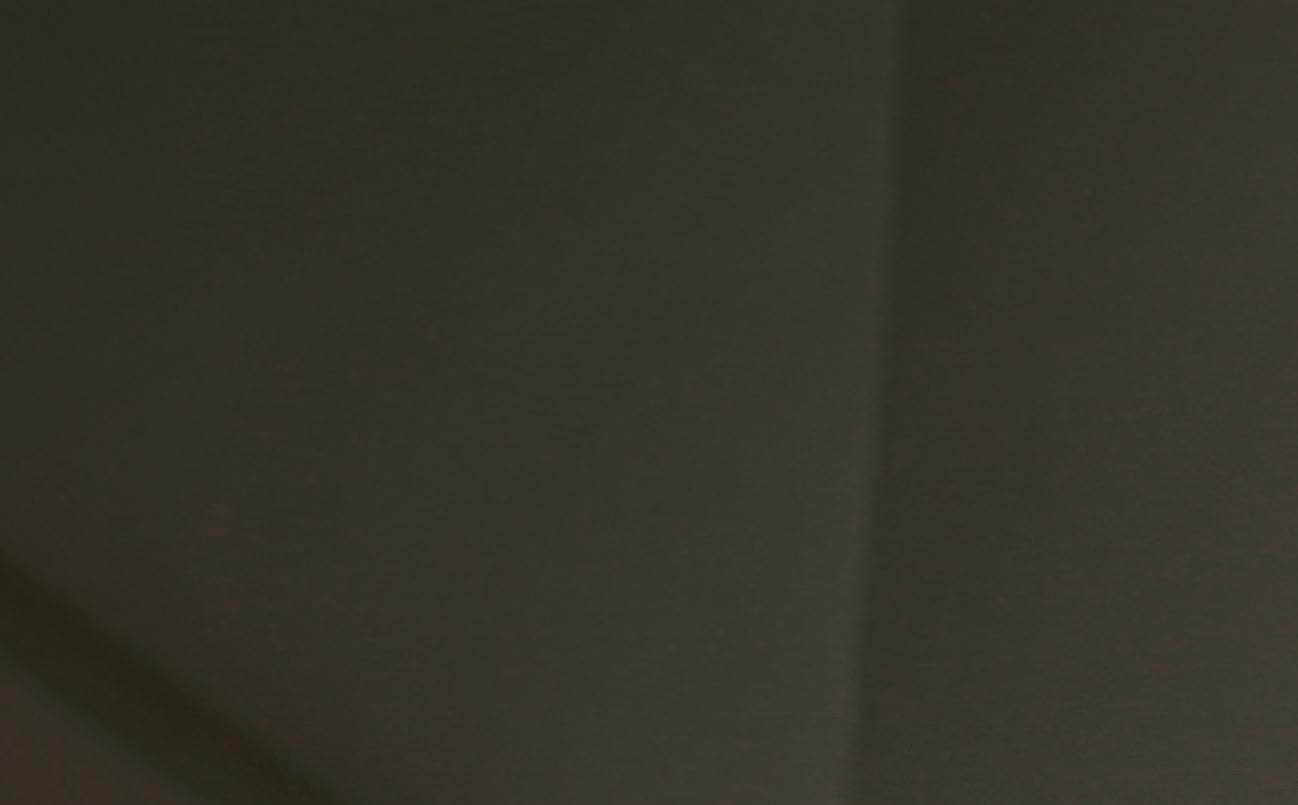
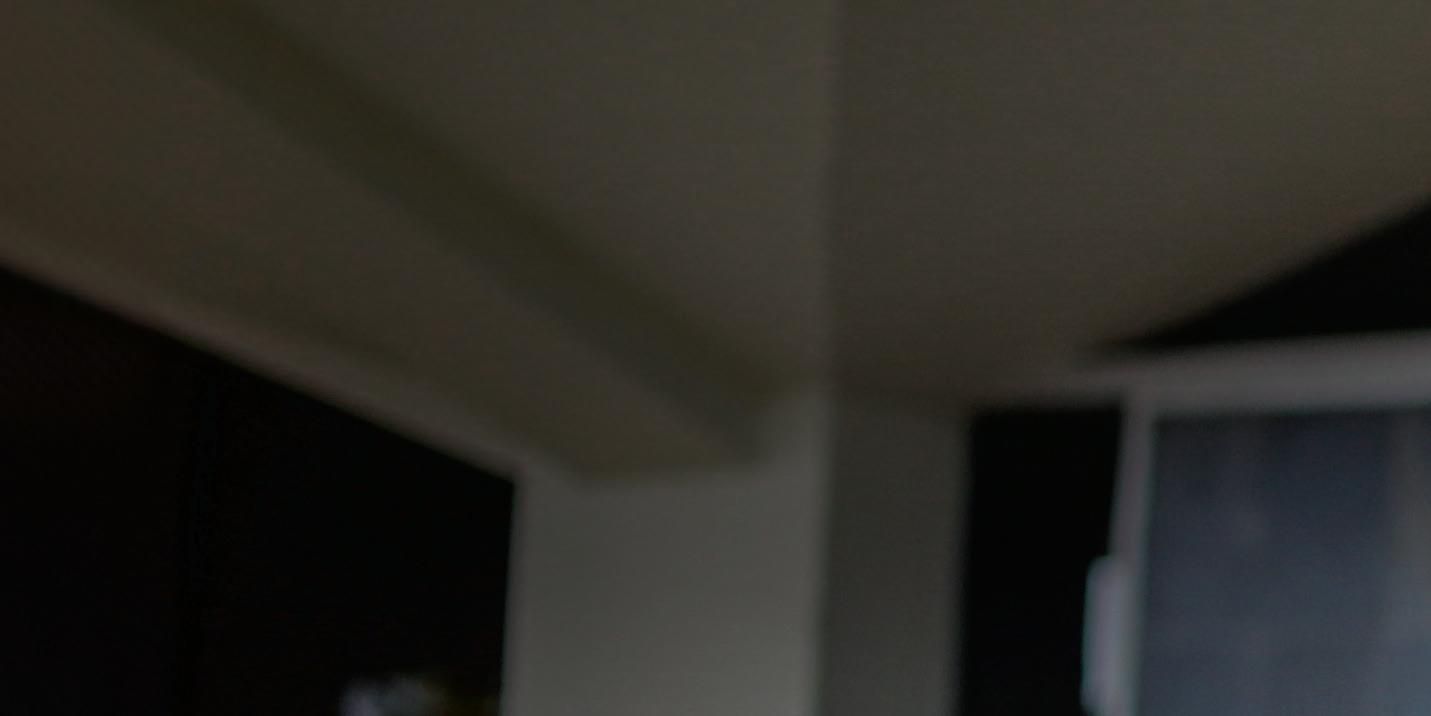










Endless possibilities —just down the street.
The same personalized support. The same hands-on learning experience. All new possibilities for your career.
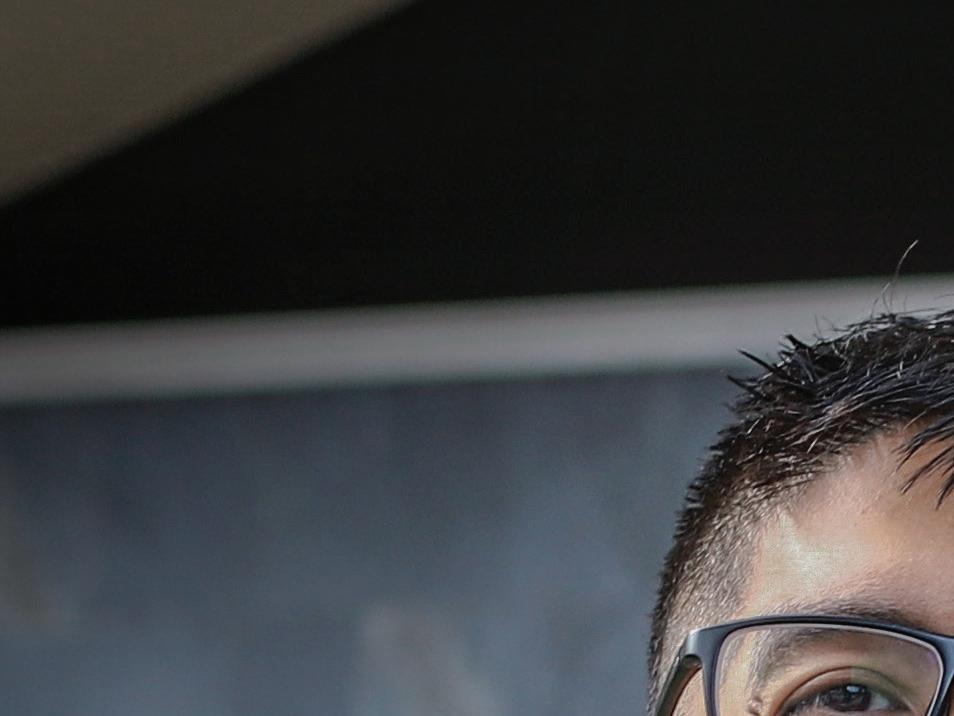
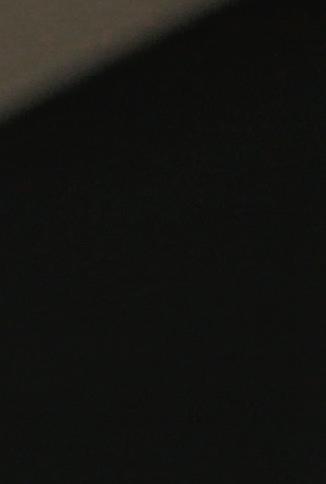


Explore versatile programs at Loyola College of Law.
· Juris Doctor – full time, part time, and evening programs

· Master of Arts in Environmental Law
· Master of Arts in Health Law & Administration

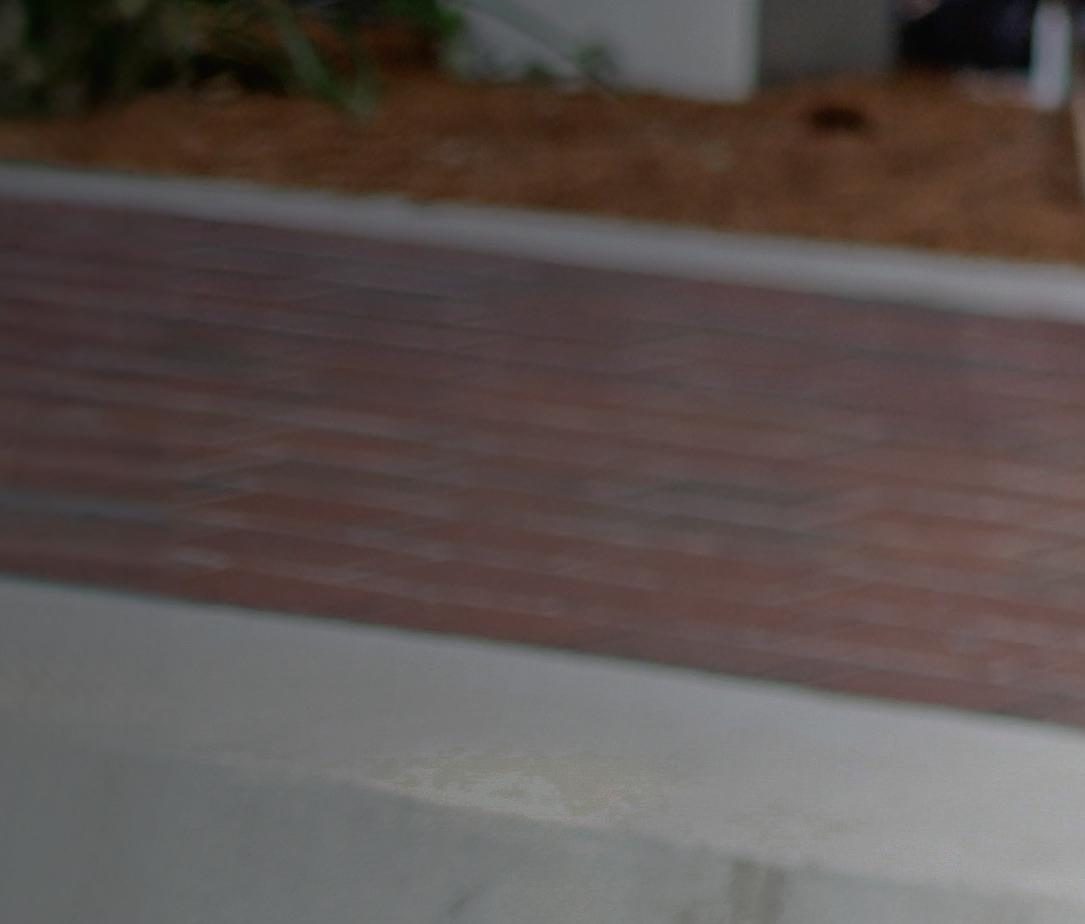





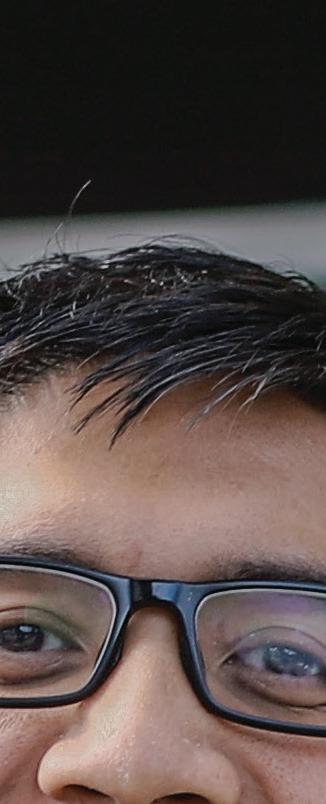








5 April 19, 2024 THE MAROON
Loyola
the
campus!
Dimitri Celis ‘21, MA ‘23 BA in Environmental Studies MA in Environmental Law
Visit
Law on
Broadway
Flourishing Sisterhood podcast: 'The saints next door'

LUCAP
founding members reflect on the organization
By Daniela Martínez dcmartin@my.loyno.edu
Since its beginnings, the Loyola University Community Action Program has given Loyola students the opportunity to service and connect with the Greater New Orleans community.
Founded around 1975 by former students Mary Baudouin, Fernando Chang-Muy, Bob Guasco, and others. They hoped to make a difference.
“A number of us wanted an outlet to live out our desire to do good, not just talk about being good, so we got together to get volunteers to go into the city and do projects,” Chang-Muy said.
Since it was a student-led organization, they said that there was sometimes a struggle to plan service. The combination of a lack of advisors and their personal management of studies and work provided them with difficult times.
But they always made it work for the love of helping others.
Salvador Longoria, who joined in 1976, said, “I would say the challenges back then revolved around us as full-time college students managing and scheduling students and working with all the agencies, schools – tasks new to us all. We were able to see our impact on the people that we served, and that gave us all the motivation that we needed.”
The group said they made life-long friendships with people from many different backgrounds and majors through the love of volunteering and social awareness.
Along with forming lasting relationships, the organization had projects that focused on advocacy and protesting, imprisoned people, the education system, and immigration. Many of these service efforts remain in the organization today.
“Service was the main specified mission but not only direct service as in visiting the sick, tutoring prisoners, etc. but also social advocacy. [LUCAP] worked closely with campus ministry, and many of us attended mass regularly. We also had retreats,” Eduardo Fernandez, who also joined in 1976, said.
Many of the former members took the excitement they had and what they learned in LUCAP to continue volunteering and helping others after graduating from Loyola.
Chang-Muy, for example, is a lawyer and a teacher who volunteers with immigrants serving nonprofits by training their boards on their roles, giving them training on how to give and get money to support their non profits.
Chang-Muy also helps nonprofits with strategic planning, and as a lawyer, he takes on at least six to seven pro bono asylum cases a year.
By Chiara Faircloth clfaircl@my.loyno.edu
Loyola students are working with the Flourishing Sisterhood project to create a new podcast.
“Flourishing Sisterhood: Nourishing Communities in the Gulf South” aims to provide support and promote social justice for sisters along the Gulf Coast and is managed by Claire Gallagher through the Loyola Institute for Ministry.
Particularly, there is a focus on understanding the beauty and benefit of aging in order to acknowledge the older age demographic of the majority of the convents in this region.
Gallagher explained, “With aging comes changes and new ways of life, so it’s called Flourishing Sisterhood because we want to help sisters answer that question of, ‘How do we continue to flourish even with these changes?’”
In response to the subject of aging, Gallagher said there tends to be a misunderstanding in the sense that people have pity, but there is another side to that story.
The podcast addresses these misunderstandings by partnering with the Flourishing Sisterhood and connecting the sisters to students who hear their experiences and share them with listeners.
“One of the goals of the [podcast] is to amplify sisters’ voices and give them a space in which they can tell their stories,” Gallagher said.
While the podcast advances the initiative of the Flourishing Sisterhood, it has also served as a learning experience

and resource for students through a partnership with an oral history class taught by history professor Justin Nystrom, in which students taking the course were interviewing the sisters to curate the podcast.
“One of the things I love about this class is that students are actually producing an actual historical record,” Nystrom said. “They are contributing to an archive; their name is on it.”
Students have made meaningful connections with the sisters through the podcast, according to Nystrom.
“I don’t know how many times [the students] would come out of an interview and be like ‘Oh wow, that was really amazing.’” Nystom said. “One, I think, emerged in tears after an interview because it was so moving.”
Sister Judith Gomila, Marianite of Holy Cross, was one of the women interviewed for the podcast despite not actively being a member of the Flourishing Sisterhood project; she was introduced to the podcast by Sister Elvira Brown.
Sister Judith spoke of how the sisterhood was so unfamiliar to her in her youth, and how she witnesses this now with the younger generation, as well.
“They thought [the sisters] were other worldly, and I think I probably thought that of sisters myself,” she said.
However, she believes these misconceptions can be avoided by telling the facts, the true stories, the humanness, as well as the Holy.
“We are the saints next door,” Sister Judith said, quoting Pope Francis.
Republic NOLA shooting raises questions about gun legislation
Issues with violent crime and debates over concealed carry are pushed further into the spotlight of local and state politics following a shooting that took place late on the night of Sunday, April 14th outside of The Republic NOLA, a nightclub in New Orleans’s Warehouse District and just blocks from the French Quarter.
One woman was killed and another 11 individuals were injured during the altercation which occurred just hours after the end of French Quarter Fest. All injured were discharged from the hospital by Monday evening.
City officials said at a Monday afternoon news conference about the shooting that statistics show violent crime and homicide rates are declining in the city. The Republic NOLA shooting and another killing of a New Orleans bar security guard have prompted renewed calls for changes to a pending Louisiana law allowing concealed carry of a handgun without a permit.
The Associated Press contributed to this report.
Chemical plants required to reduce emissions
More than 200 chemical plants nationwide will be required to reduce toxic emissions that are likely to cause cancer under a new rule issued on April 6 by the Environmental Protection Agency.
Areas that will benefit from the new rule include majority-Black neighborhoods outside New Orleans.
“Every community in this country deserves to breathe clean air,” EPA Administrator Michael Regan said.
The Associated Press contributed.
WORLDVIEW 6 April 19, 2024 THE MAROON
Charlotte Berg and Ava Radosevich interview Sr. Julie Glaeser in Bobet Hall on April 2, 2024. Students taking "Documentary and Oral Histories" with professor Justin Nystrom are curating a podcast. Courtesy of Justin Nystrom
Nursing sophomores Lexi Leonard-Graham and Gabby Arvie return from walking a dog at PAWS on Jan. 27, 2024 for a LUCAP service trip. LUCAP continues to maintain its founding mission. Morgan Love/The Maroon
Do you feel safe on campus?
Fact: Did you know that LUPD can escort you if you feel unsafe or unwell?
To learn more, scan here!
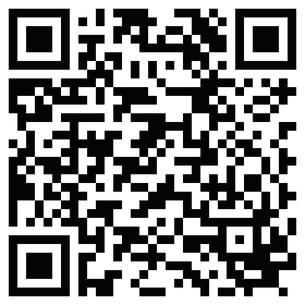

7 April 19, 2024 THE MAROON
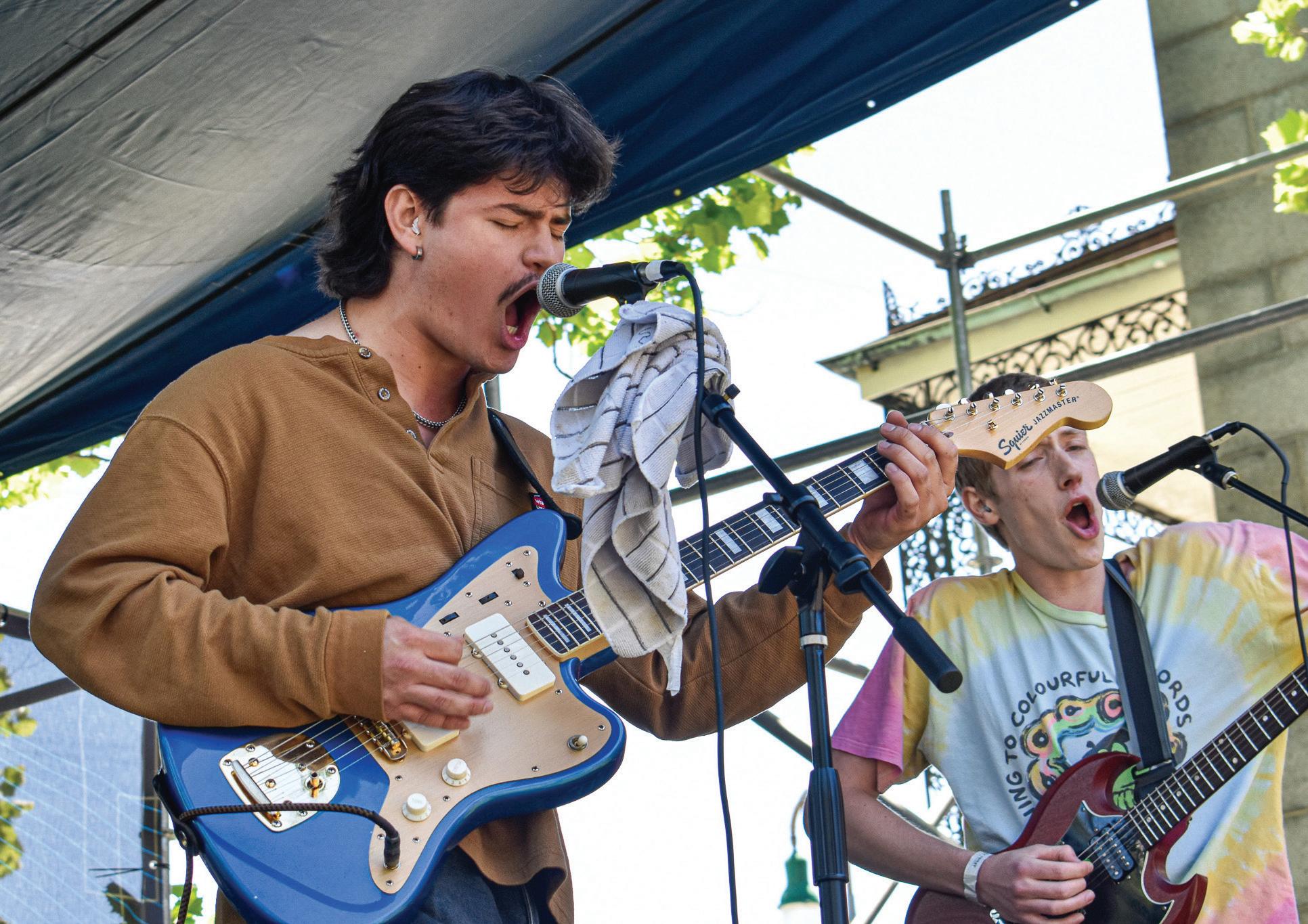


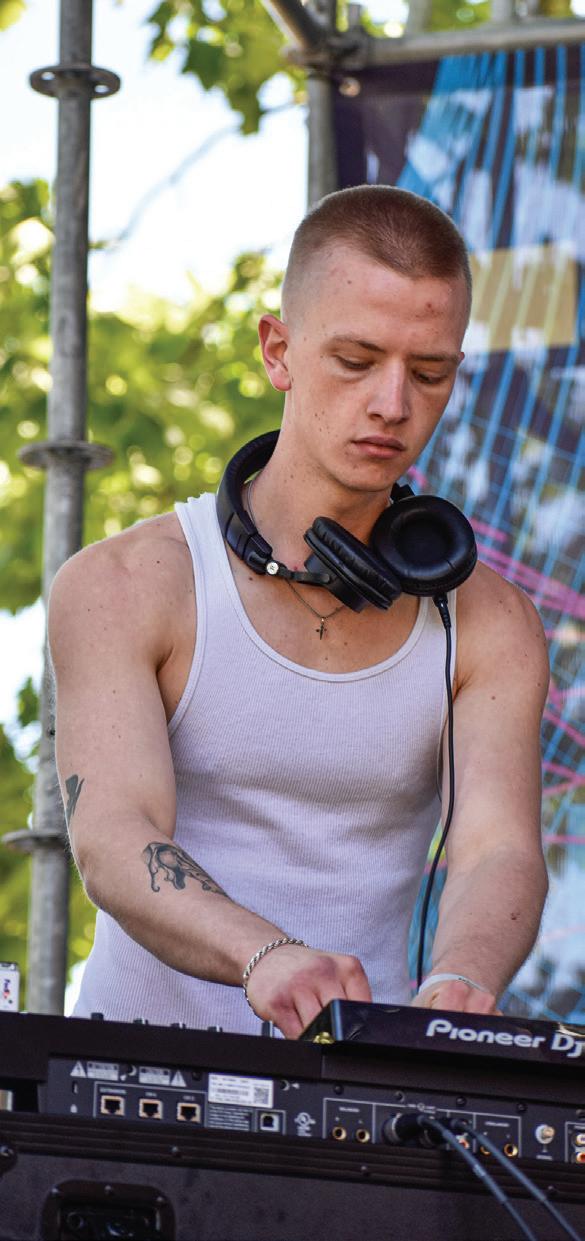

Student performers take on French Quarter Fest
By Sophia Maxim svmaxim@my.loyno.edu
Student musicians performed at French Quarter Fest on the Esplanade in the Shade Stage at the New Orleans Jazz Museum, sponsored by Loyola. The Kissing Disease, D.P.M Javi featuring Ben Delgado, and Planet of Little Green Men played music for the crowd on April 12. Festival attendees set up chairs, danced, drank beverages, and ate food from the stands.
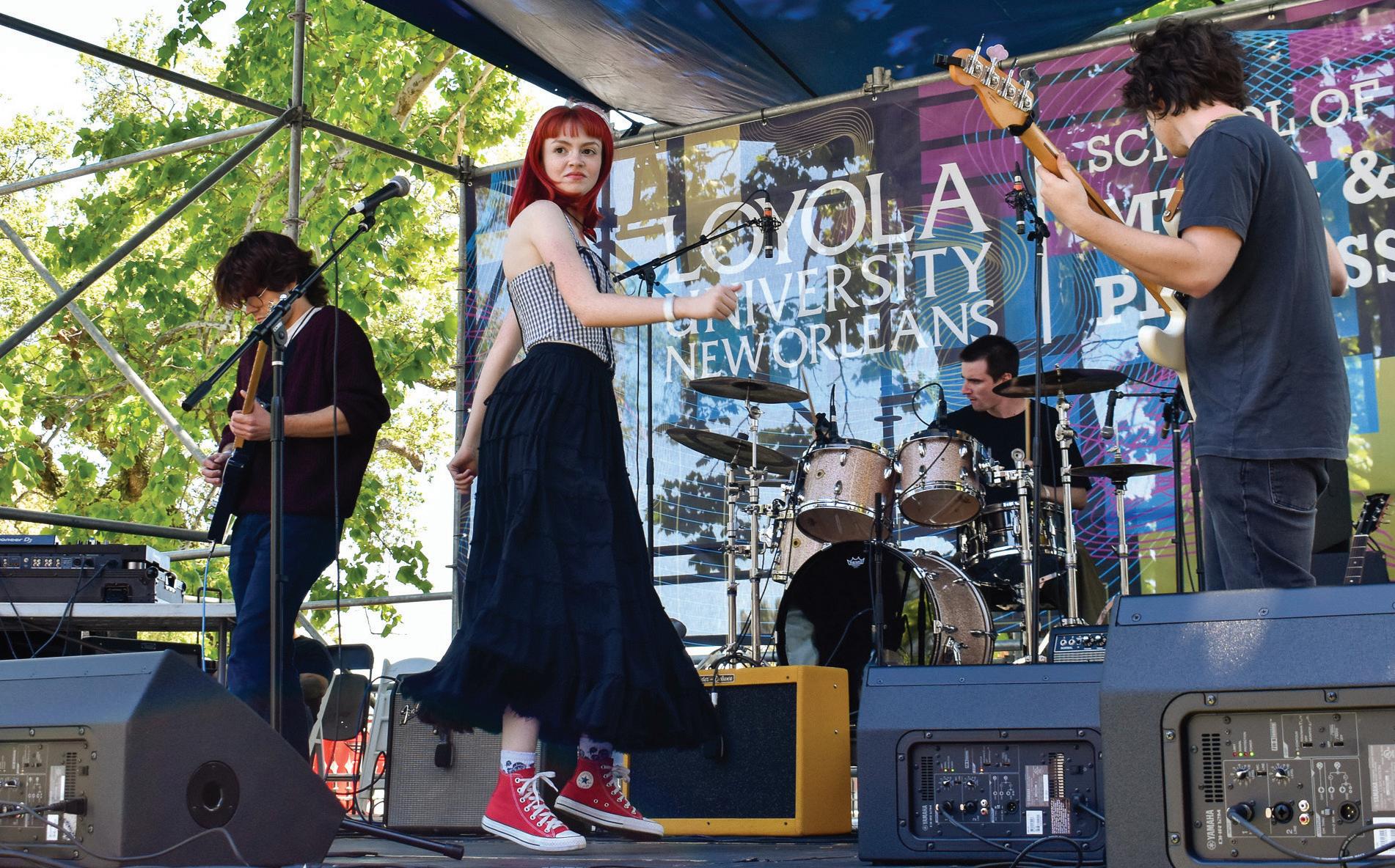
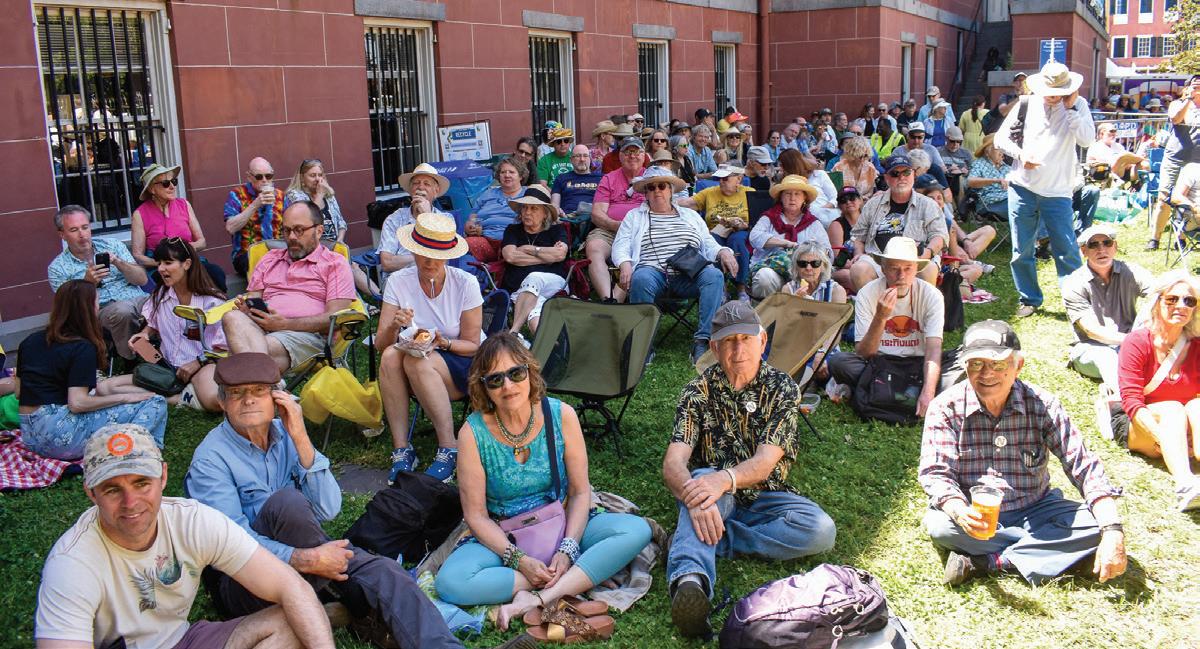

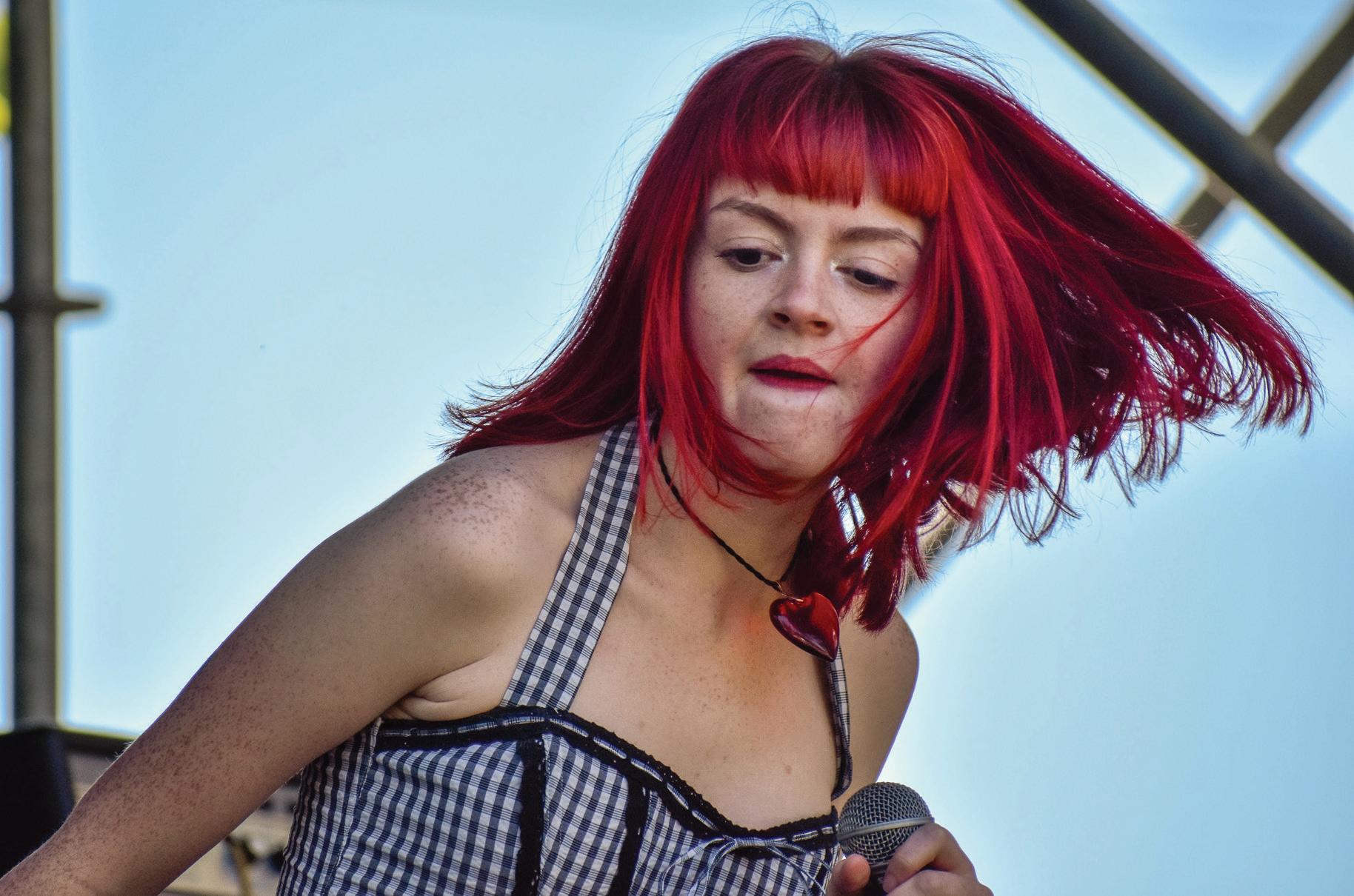
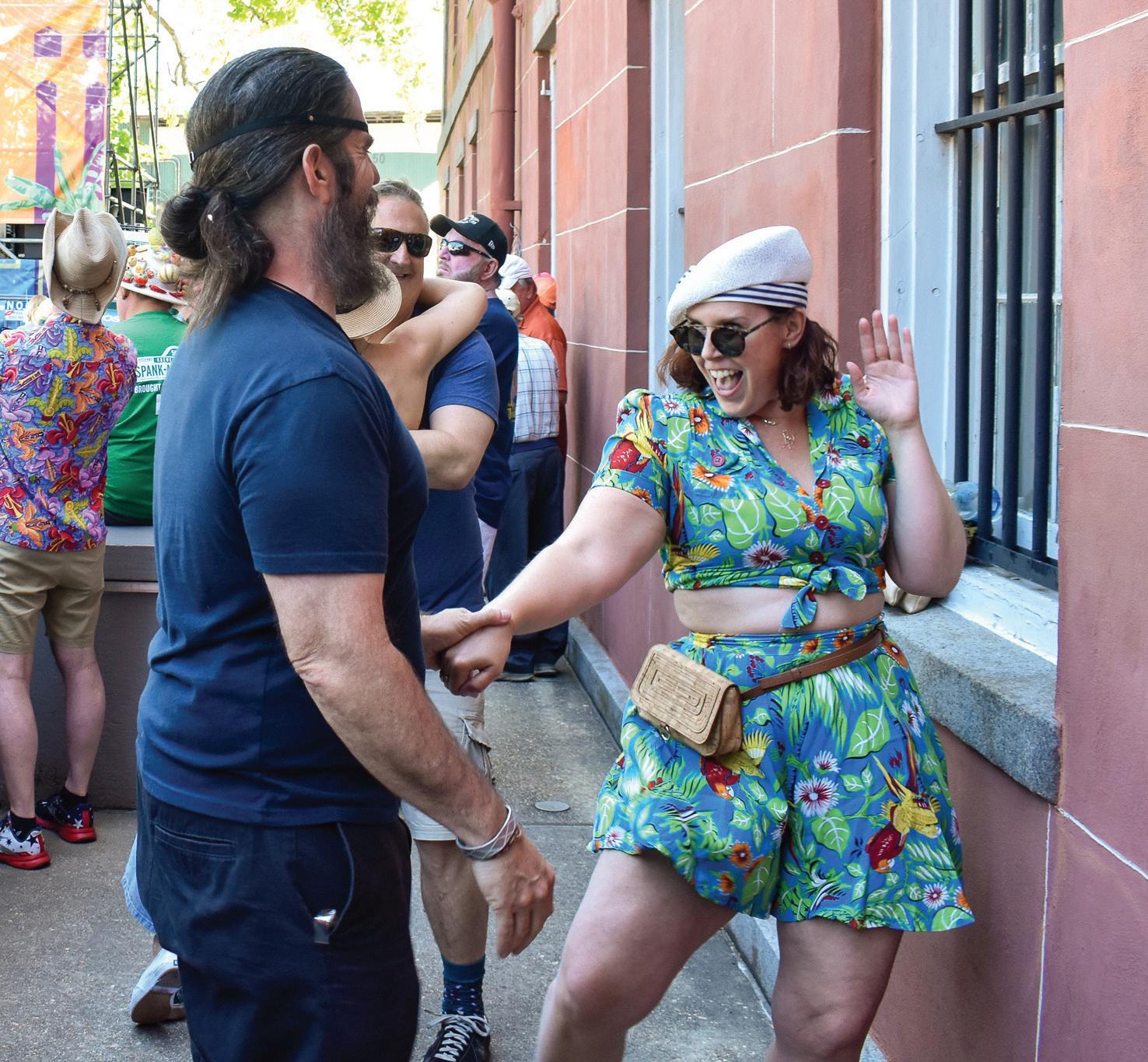
Muslim Student Association hosts Eid event
By Sophia Maxim
Students celebrated Eid in the Peace Quad with halal sweets, snacks, drinks, and henna tattoos, provided by the Muslim Students' Association.
"As we congregate on this blessed day, we cannot forget our people that are struggling around the world, especially Gaza," the MSA stated on their Instagram page.
"Charity is an important aspect of Eid, so we cannot forget to give it to those who are trying to celebrate amidst violence."

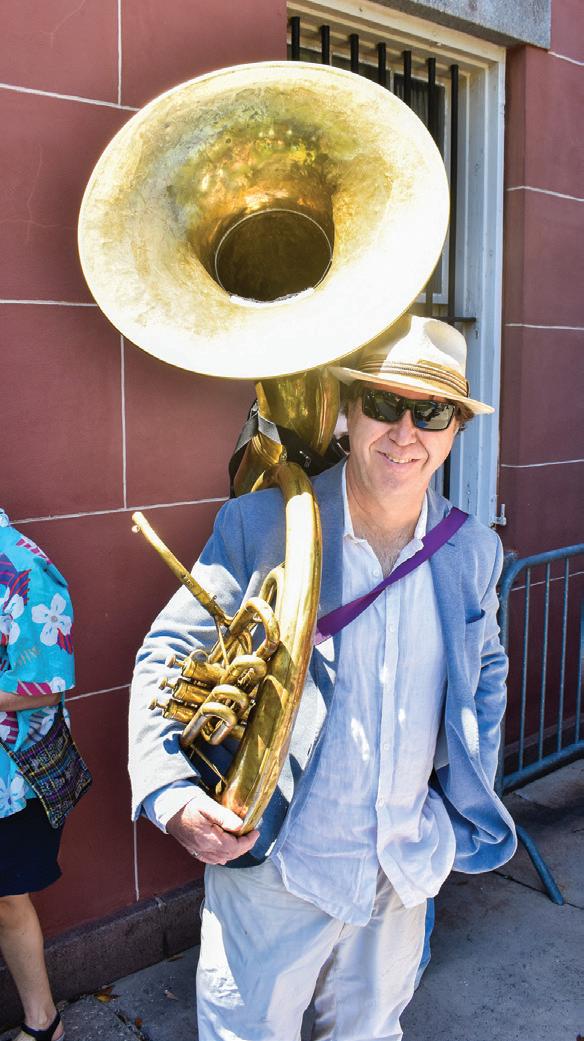

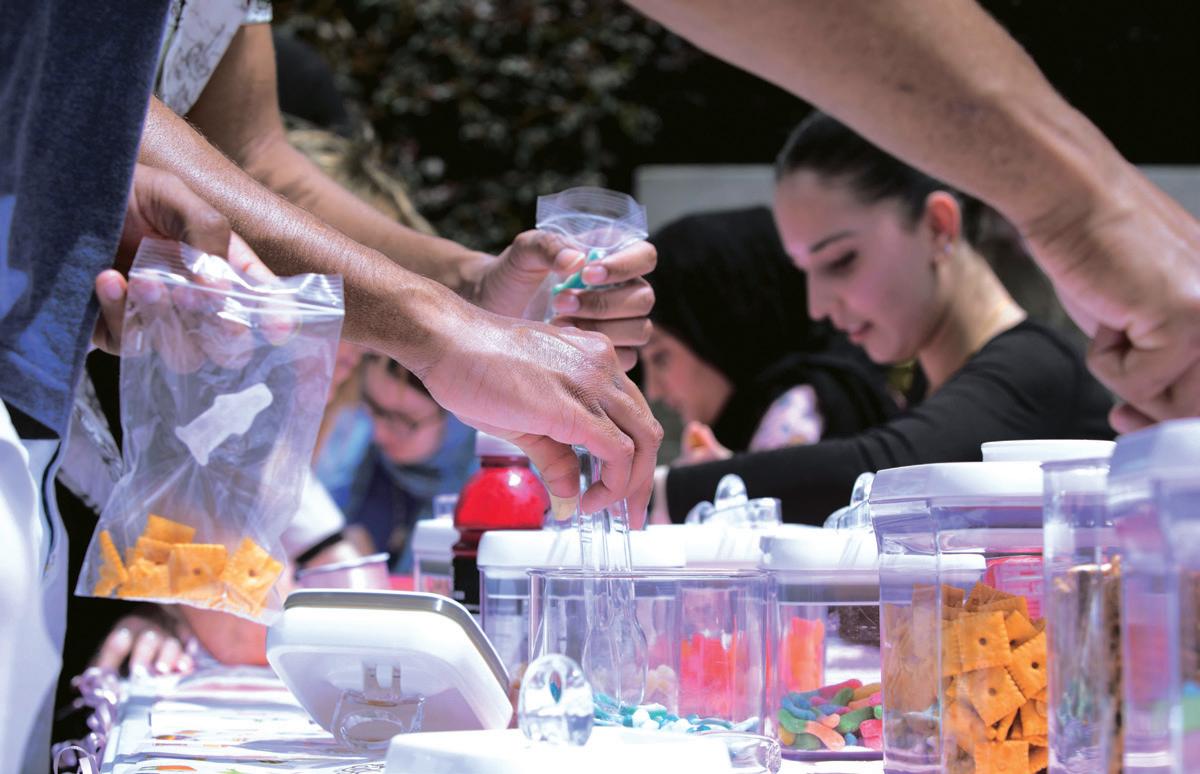
LIFE & TIMES 9 Film • Arts • Food • Music Leisure • Nightlife 8
student receives a henna tattoo in the Peace Quad on April 28, 2024. Laci Barrow/ The Maroon
A
A student receives a henna tattoo in the Peace Quad on April 28, 2024. Laci Barrow/ The Maroon
Students make snack goodie bags with candy and crackers in the Peace Quad on April 28, 2024. Laci Barrow/The Maroon
(Left to right) Planet of the Little Green Men lead guitarist Anton Alvarez and lead singer Ben Heil perform on the Esplanade in the Shade Stage at the New Oreans Jazz Museum, sponsored by Loyola, on April 12, 2024. Sophia Maxim/The Maroon
D.P.M Javi performs on the Esplanade in the Shade Stage on April 12, 2024. Sophia Maxim/The Maroon
Planet of the Little Green Men lead singer and guitarist Ben Heil rolls around on the Esplanade in the Shade Stage at the New Oreans Jazz Museum, sponsored by Loyola, on April 12, 2024. Sophia Maxim/The Maroon
The Kissing Disease lead singer Maddie Gartland performs on the Esplanade in the Shade Stage at the New Oreans Jazz Museum, sponsored by Loyola, on April 12, 2024. Sophia Maxim/The Maroon
A couple dances by the Esplanade in the Shade Stage at the New Oreans Jazz Museum, sponsored by Loyola, on April 12, 2024 Sophia Maxim/The Maroon Sophia Maxim/The Maroon
Tubist Matt Perrine with The Tin Men arrives for his gig at the Esplanade in the Shade Stage at the New Oreans Jazz Museum, sponsored by Loyola, on April 12, 2024. Sophia Maxim/The Maroon
The Kissing Disease performs on the Esplanade in the Shade Stage at the New Oreans Jazz Museum, sponsored by Loyola, on April 12, 2024. Sophia Maxim/The Maroon
Festival attendees watch performances at the Esplanade in the Shade Stage at the New Oreans Jazz Museum, sponsored by Loyola, on April 12, 2024. Sophia Maxim/The Maroon Ben Delgado performs with D.P.M Javi on the Esplanade in the Shade Stage at the New Oreans Jazz Museum, sponsored by Loyola, on April 12, 2024. Sophia Maxim/The Maroon
A man carries crawfish from a food stand at the New Oreans Jazz Museum on April 12, 2024. Sophia Maxim/The Maroon
WEBSITE:
Continued from page 1
Schmidt clari ed that his job is to deal with the code and databases that run Loyola’s public-facing websites, particularly those that deal with student recruitment; however, many members of the Loyola community have access to update and add content.
e O ce of Marketing and Communications, or OMC, team only usually updates on a case-by-case and project-driven basis with the department's main responsibilities being the architecture and functionality of the website, according to Hollie Garrison, the university creative director.
e lack of website maintenance by various departments has impacted students’ ability to nd necessary course information.
Environmental science freshman Dex Nichols said their experience has been far from “so-so;” it’s been worse. According to them, nding anything they might need on the website is a struggle.
ey said they would have to email multiple sta members to even nd what was needed.
Even when they declared their minor in design, it took a while for them to nd info to “have everything sorted,” as where to go was vague, and they had to search aimlessly for what they were looking for. Nichols experienced di culty nd-
ing the university bulletin, which is a resource that Starks said was unknown to him, and there were no ways of easily discovering that information.
e university’s interim Provost the Rev. Justin Da ron, S.J., who reviews and updates content on the institution’s website, said the university bulletin is an annual publication of Loyola University New Orleans that itemizes academic policies, academic program requirements, and a catalog of course descriptions. It is the o cial document de ning what students must take to ful ll a degree.
Da ron said updates to academic regulations, policies, and procedures take place on an annual basis, and these items are for all students attending Loyola University.
According to Da ron, students nd the bulletin by going to https://bulletin. loyno.edu/, and they should contact the department that owns the website, whose contact information can be found at the bottom of the page. He said otherwise students can report the issues to support@loyno.edu.
History senior Leila Jones had similar issues with locating requirements to complete her thesis.
Jones said when she went to the history department’s website, looking for information regarding her thesis, the website instructed students seeking information to reach out to the depart-
ment chair David Moore – who Jones later found out has not been employed at Loyola for several years.
Jones added that she didn't even know that each college had their own website until she started her social media internship with the English department.
As an intern, Jones was tasked with writing copy for the department’s web pages and updating outdated information; however, she did not have direct access to update the pages.
She said her supervisor at the time had her put the edits needed in a Google document to update the website, but her supervisor was not familiar with the system, which resulted in things not being updated.
“ ere’s all these things that need updating and that could be updated from within the department, but it just doesn't get done because of other barriers and obstacles,” she said.
Jones said it’s complicated and inaccessible for people who are interested in updating website content but don’t actually have access to update it. ere’s also the issues of those people with access not knowing how to update the information, she said.
About the university website, she said that the main issue is that there is too much clutter, and many things are outdated.
As for perusal of the website, Jones

said, “ ere’s so much going on with Loyola’s website with so many apps and pages,” she continued. “I never actually use the tabs on the web because there's just so much to parse through that I end up Google searching instead.”
For Schmidt, being the only web developer means he has to handle all of the user requests and backend development instead of focusing on updating the site code.
He also coordinates with the information technology department, which handles student data, nancial systems, and provides the servers that host the sites.
department is in the process of hiring another developer, which is being managed by Garrison, whose role is to manage the imagery and aesthetics of the university website.
"There’s all these things that need updating and that could be updated from within the department, but it just doesn't get done because of other barriers and obstacles."
— Leila Jones History senior
Despite this, Schmidt believes he can still manage his job e ectively.
“ e webteam has always handled a large number of pages, somewhere in the neighborhood of 187,000+,” he said.
“We rely on end users in departments to maintain their own content while we provide assistance as needed.”
e Marketing and Communications
However, with the departure of university spokesperson Rachel Hoormann, Garrison is acting as the interim lead of the marketing and communications o ce. She said, until a new vice president is selected and instated, she is also working as a liaison between senior management and the OMC team, ensuring that key leadership objectives are met.
Garrison maintains that having up-to-date content is the responsibility of the departments, colleges, and groups/clubs.
She said, “To deal with the current issues, OMC is working with IT and other relevant departments to update the backend tech that runs the Loyola site.”

April 19, 2024 THE MAROON 10
STAFF Assistant Editors: Patrick Hamilton, Rodrigo Delgado Jr., Falyn Hardouin, Mabel RegaladoHernandez, Ruby Nieder, Chiara Faircloth, sam Guillotte, Chris Maldonado, Janssen Van De Yacht Comics Editors: Greer Jines, Grace Knight Maroon Broadcast Producers: Francisco Esteves, Hannah Darcey, James Hufnagel, Christopher Nesbit, Matthew Richards, Leonard Jackson III, Mabel Regalado-Hernandez, Maria DiFelice, Grace Agostino, Sadie Meade, Ashlyn Bobb Collins, Cecilia Calderin Digital Team: Addison Laird, Rin Andrews, Daniel Wong, Kennedy James, Lydia Hilt, Natalia Silva The Wolf: Dajah Saul, Taylor Falgout, Sophia Renzi Sta Writers & Photographers: Myles McWilliams, Shelby Perkins, Angel Martinez, Micaela Hood, Jacob L’Hommedieu, Guelan Zaour, Alana Thompson, Avanni Joseph, Nadir Benslimane, Brice Gutter, Gabbee Bonura, Sydney Piglia, Hector N. Garcia, Eve McFarland, Aaron Covin, Liz Snow, Heidi Herrera, Ryan Talley, Adviser: Michael Giusti CONTACT US Main O ce 504) 865-3535 Business O ce (504) 865-3536 Adviser’s O ce (504) 865-3295 Correspondence maroon@loyno.edu Letters to the editor letter@loyno.edu Advertising ads@loyno.edu Website www.loyolamaroon.com Twitter @loyola_maroon Facebook The Maroon Instagram @loyola_maroon Our o ce is in the Communications/Music Complex, Room 328. Send mail to: The Maroon, Loyola University, Campus Box 64, 6363 St. Charles Ave., New Orleans, LA 70118 The Maroon is published every Friday. Unless otherwise noted, all content is copyrighted by The Maroon. All rights reserved. First copy free to students, faculty and sta . Every additional copy is $1.00. The Maroon is printed on 30 percent post-consumer recycled content.

The SWEETER campaign: Envisioning a new Loyola
By Kloe Witt kgwitt@my.loyno.edu
The new leaders of Loyola’s Student Government Association are aiming to create a SWEETER Loyola.
After winning the 2024-25 SGA election, incoming president Diamond Dixon and Rowan Sawyer said they are eager to officially start their term.
“I’m super excited for this upcoming administration,” Dixon said. “I’m super excited to see what we’re going to be able to accomplish.”
The team ran on a seven pillar platform with the acronym SWEETER., where they plan to address issues of safety, wellness, economics, environment, transparency, empowerment, and
RAISES:
relations.
Dixon said she hopes students see this platform and are impressed with their goals.
“A seven pillar platform is kind of crazy, but I think people should see from that that we’re trying to do a lot,” Dixon said.
The pillars for their platform stem from areas the pair have experience in working on within SGA.
the director of finance. With these positions, Dixon said she gained experience in economics and leading a team.
“I think that it’s important to remember it’s because of the students and it’s because of the people.”
— Rowan Sawyer Vice President Elect of SGA
Dixon has previously worked in the first year council, as wellness coordinator on the finance committee, and this last year, she was
Dixon said she feels each of these positions have given her perspectives she is taking with her in this new leadership position.
“I’m really taking the mindset that I have so much experience and so much knowledge and a huge passion for doing things better, and I feel like I wanna use all of that experience and all of that preparation, so prepare for this upcom-
ing year,” Dixon said.
While Dixon’s experiences with SGA reside within the cabinet, Sawyer has spent her time working in the senate.
Sawyer has held positions within the first year council, a senator and senator at large for College of Nursing, head of environmental and facilities and services committees, and speaker of the senate.
“I feel like all of those unique experiences and perspectives have helped me become a more rounded vice president,” Sawyer said.
Dixon said she believes SGA should be advocacy based and wants to push that in the next year.
Dixon also said she wants to communicate more with the student body,
though she isn’t quite sure how to do that. She said it’s something she will have to figure out during her term.
Sawyer said her main goal as vice president is for students to not only have more resources but to be more aware of those resources.
The duo is going in with a students-first mindset.
“You’re in this position, and you were elected into this position, and I think that it’s important to remember it’s because of the students and it’s because of the people,” Sawyer said. “You can’t forget about them.”
University senate to vote on new AI policy University raises salaries to retain faculty
Continued from page 2
“That is inequitable and an untenable situation,” she said. “Loyola's position on faculty compensation and retirement benefits is causing faculty to leave the institution and it's making it harder for us to recruit faculty.”
Daffron said that recruiting capable faculty remains a priority among the administration, and this move marks a key step in maintaining the quality of the education students receive.
“The university is committed to paying salary and benefits that allow Loyola University New Orleans to retain and attract highly qualified values-driven faculty and staff,” he said. “This is critical because it drives the type of employee engagement that creates a transformative learning environment for our students.”
By Matthew Richards mlricha2@my.loyno.edu
A new university policy on artificial intelligence for faculty and students is being considered for approval by the University Senate.
The issue is one that is of great concern to university faculty, especially regarding the transparency between them and their students on the work that’s being done.
The vote comes as the world of AI continues to disrupt many institutions of higher education across the United States.
“The catalyst for the policy was the acknowledgment that generative AI was available and quite capable of performing tasks in some respects competitively with humans, which raised many concerns on how best to respond to the availability of the software by students,
faculty, and staff,” M. Isabel Medina, the chair of the university senate, said.
The policy seeks to establish a new set of guidelines for the Loyola community to abide by on how to navigate the usage of the technology and to fill a gap in the university’s rules and regulations.
“We do not currently have an AI policy other than a brief point in the academic honor code about using AI,” Vice Provost and policy author Erin Dupuis said.
“We think it’s important to comprehensively think through the ethical and educational uses of AI on a university campus,” she said. “We aspire to be proactive rather than reactive.”
“We have no intention of banning AI use on our campus, but students must be careful to use it ethically and with guidance.”
—
Erin Dupuis Vice Provost and policy author
Dupuis stated that this new policy pertains to the use of generative AI in the classroom, research, hiring, and several other areas of university life.
By having a policy in place, faculty members would be able to have a set of guidelines to tailor their policies toward student AI usage.
“As I understand it, the policy preserves faculty's discretion in deciding how best to incorporate generative AI into teaching, or whether to prohibit use of generative AI by students,” Medina said. “It also makes it clear the responsibilities that faculty have in using
the software.”
The policy could also clear up some confusion students may have about what uses of artificial intelligence are allowed inside and outside of the classroom.
“We have no intention of banning AI use on our campus, but students must be careful to use it ethically and with guidance,” Dupuis said. “The policy guides students about AI use outside of the classroom for other university activities and for AI use in research.”
However, the potential approval of the policy does not mean that it will remain a fixed document after that, with school leaders recognizing the rapidly changing terrain of AI technology.
Dupuis said the policy can be reviewed at any time; however, she said it clearly states the university senate will review and adjust the policy every two years, as needed.
NEWS 11 April 19, 2024 THE MAROON
President Elect Diamond Dixon and Vice President Elect Rowan Sawyer after being announced as SGA president and vice president respectively on March 25, 2024 in the Peace Quad. Kloe Witt/The Maroon
Baseball preps for postseason

The Loyola Baseball team is gearing up for the end of the season and preparing to make another deep run in the Southern States Athletic Conference Tournament after being eliminated in the semifinals last season.
“We got too comfortable after our good start last year, which led to us struggling at the end of the season and missing the Regionals,” said senior outfielder Tucker Ganley.
Ganley stressed that because of that, the teams’ level of focus has improved as the season has progressed.
“The older guys this year remember that feeling of being left out of the national tournament,” he said. “That has kept our focus levels sharp to make sure we finish the regular season playing our best ball.”
The Wolf Pack hold a 32-11 record and currently sit in a tie for second place in the conference standings, 3 games behind the leader.
Part of the team’s success can be credited to their hot start to the season, where they won 13 of their first 15 games.
“We were so excited to get the season rolling and play someone other than ourselves,” said Ganley. “We had very competitive fall scrimmages and practices with a lot of guys battling for positions. All of that made us excited to play someone else so we could finally compete together.”
Senior outfielder Kason Cullins has credited the team’s ability to never get down on themselves as a reason for their great play this year.
“This team has been able to overcome adversity and improve after every game,” said Cullins. “You can’t ever count us out. We’ve been down 12-0 in the first inning of a game and came back and won 2212. It does not matter what the score is, we will fight until the end.”
And as the regular season winds down, the Wolf Pack are looking to carry the lessons they’ve learned into the postseason. Close wins throughout the season against teams like Texas A&M-Texarkana, conference foes Brewton-Parker, and an upset victory over #3 Georgia Gwinnett have been key moments that have shaped this year's team.
“All of those wins had us staring at a loss in our face and we had to overcome adversity to win,” said Ganley. “Those are the types of games that will prepare us for the postseason.”
The team goals remain the same, however, especially for the team’s seniors.
“As my time here closes out, I am honestly just looking to have fun out there,” said Cullins. “It would be nice to see this team go on and win a conference tournament and a regional championship for sure, and have all the work we put in this season pay off in the postseason.”

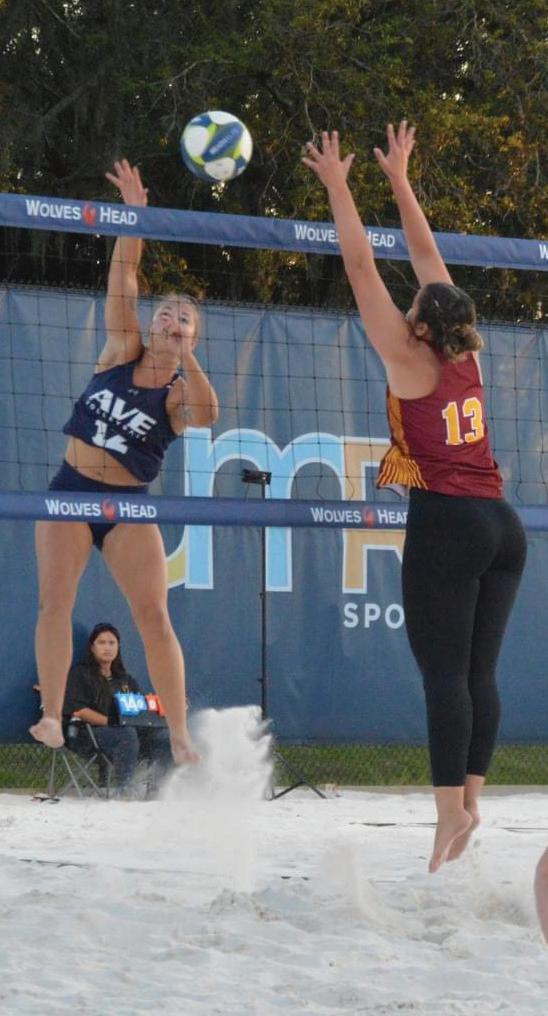
wW'Bet on yourself'
Samantha Ingram talks collegiate career and next steps.
By Samantha Guillotte slguillo@my.loyno.edu
“You can do so much more than you think,” student-athlete Samantha Ingram said.The soon-to-be Loyola graduate is more than a dual sport athlete, volleyball and beach volleyball – a feat in itself. Ingram is a history major, coach, and transfer student from Texas. Ingram came to New Orleans in 2022, making her time at Loyola only a few years.
From experiencing Mardi Gras for the first time to learning about the rich history of the city, Ingram says she’s grateful to be in New Orleans, especially as a history major. After transferring from a junior college, Loyola gave her the full college experience that she felt she missed out on. Ingram said she was able to have more community involvement compared to her old school.“It’s definitely a different vibe. You get to have DJ PJ in the quad or like the homecoming stuff; there was none of that at my JuCo,” Ingram said.
Ingram said she was “perfectly con-
tent” quitting volleyball and simply being a college student. However, Ingram said her mom wasn’t a big fan of that plan, so she went into the transfer portal instead and found herself a part of the pack.
“As Coach Robbie would say, you just have to keep climbing the mountain,” she said, quoting her volleyball coach.
Upon graduation, Ingram will move to Illinois to serve as the assistant coach for volleyball at Rock Valley College. Ingram said she is excited to be a coach and be on the other side of athletics.
“I was done being the athlete in athletics. I think that chapter has closed for me,” the volleyball player said. “I loved it and had the best time but I am excited to be challenged in a different way.”
In her new position, Ingram plans to put a large emphasis on mental health. Ingram said she sees that college athletes base a lot of their worth on their performance.
According to Ingram, the mental health game as an athlete is the most challenging thing she’s ever done.
“I would focus more on building the
person than the player,” Ingram said. “More than anything, I just want to help people become better people. Better athletes are just four years of your life.”
As Ingram’s senior year is coming to an end, she has a lot to reflect on; as for takeaways, Ingram has two.
One: taking time to build friendships and using the time to figure out who you are as a person is essential. After creating her support system, Ingram said her journey became a little bit easier.
“Now’s the time to make a community for yourself because those people are the people you are going to carry with you for your life,” she said.
And two: You have to believe in yourself more than the doubt you have, she said. Ingram added that she sometimes bet on others more than herself, but volleyball taught her to trust herself and take a chance.
“Bet on yourself,” Ingram said. “You can do the whole dang thing, just bet on yourself.”

Final Scores
Baseball vs. Springhill
W 12-2
Women's Golf, SSAC Championship 2nd of 8
Men's and Women's Tennis
Nicholls
W 4-3 (Women) L 4-0 (Men)
Upcoming Games
Baseball TN Southern
April 19-20
Men's Golf, SSAC Championship in Greenville, Alabama
April 22-24
Track & Field SSAC Championship in Gulf Shores, Alabama
April 22-23
Athletes embrace pregame rituals
By Isabella Castillo ivcastil@my.loyno.edu
Before a Loyola athlete takes the field, court, or course, meticulous routines and superstitions often precede. Many Wolf Pack athletes have pregame rituals to anchor themselves in a proper mindset.
In the world of sports, superstitions and personal traditions have allowed athletes to trust something outside of their training. From diets to wearing gear from their first championship, these ritualistic routines offer a snippet into how athletes prepare to succeed.
Repetition and attention to personal details make a difference in performance, according to Diego Rodriguez, a junior tennis player.
From how he fuels his body to how he prepares his gear, Rodriguez said his methodical procedures have paved the way to his success.
“Routine is crucial,” Rodriguez said.
“When you catch something recurrent
while performing well, keep doing it. You’ll feel a new level of confidence. You’ll learn to associate certain practices with feelings of success.”
The night before an athlete competes impacts their performance. Eating, resting, and gear preparation weave through the night before a competition, each task allowing the athlete to concentrate.
Senior golf player Daniella Salazar said she never overlooks getting enough sleep and rest.
Amongst Salazar, Wolf Pack athletes consider multiple factors in their preparation, including interpersonal interactions. Human connection can make an impact on how athletes perform during a match. For sophomore track and field thrower Richard Maggan, talking to a specific person is necessary.
“I have to talk to my mom before I compete every time,” Maggann said. “She was the first coach I had and always gives me the best advice.” Some athletes take a more solitary approach. Sophie Sierveld, a criminology senior swimmer,
said she prepares through an “isolated method.”
“Since I was little, I have always isolated myself and kept quiet while I listen to music,” Sierveld said. “Mainly in efforts to get my head and body prepared to compete.”
Some pregame practices step outside of conventional routines, as some athletes have adopted niche rituals that allow them to connect with their roots.
It makes his competition event harder, Maggan said, but he will continue to use the same throwing shoes he wore the first year he won the state championships in high school.
“All of my accomplishments have been made with those shoes, so it’s too difficult for me to say goodbye,” Maggan said. Even seconds before competing, athletes transpire their personality into their performance through small gestures and quirks.
Sierveld said she wiggles her fingers for good luck on the block – seconds before she dives into the water.
Salazar, who is faithful to changing a putt if she doesn’t make it, said rejecting frustration and patience is key.
“Being motivated and trusting your talent – that is so important,” Salazar said, emphasizing the mental rituals present in her life as an athlete.
And according to Rodriguez, it’s not about luck.
“It is about being aware of what works for you when you’re succeeding and what brought you there.”

SPORTS 12 APRIL 19, 2024 THE MAROON
Samantha with her parents, Denise and Mark Ingram. Courtesy of Wolf Pack Athletics.
RICHARDS Journalism junior mlricha2@my.loyno.edu
MATTHEW
Samantha Ingram (right) competing in conference. Courtesy of Susan Guillotte.


April 19, 2024 THE MAROON 13
COMICS
Greer Jines/The Maroon
We need academic freedom and expression in schools
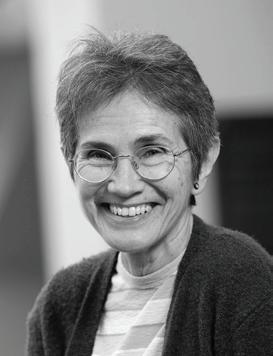 Dr. Isabel Medina Ferris Distinguished Professor of Law and Chair, University Senate medina@loyno.edu
Dr. Isabel Medina Ferris Distinguished Professor of Law and Chair, University Senate medina@loyno.edu
The American Bar Association recently adopted a new accreditation standard for law schools (public or private) requiring them to have policies in place that protect academic freedom and freedom of expression for faculty, staff and students. The standard applies to all persons teaching law school courses regardless of status and applies to research activities, publications, law school governance, public service responsibilities and teaching.
Law school policies must:
teach or to advocate an idea or doctrine is always legitimate." More particularly, the policy specifies that "because the college classroom ... [is a captive audience, faculty members must exert every effort not to attack nor deride religious or political beliefs of students." The University administration, specifies the policy, has an obligation to "protect teachers and students from all destructive pressures and harassments."
" Law schools may reasonably regulate the time, place and manner of expression."
(1) Protect the rights of faculty, students, and staff to communicate ideas that may be controversial or unpopular, including through robust debate, demonstrations, or protests;
and
(2) Proscribe disruptive conduct that hinders free expression by preventing or substantially interfering with the carrying out of law school functions or approved activities, such as classes, meetings, interviews, ceremonies, and public events, as stated in ABA Standard 208.
Law schools may restrict expression that violates the law, constitutes a genuine threat or harassment, falsely defames a specific individual or violates a privacy or confidentiality interest. Law schools may reasonably regulate the time, place and manner of expression. These are the traditional restrictions on speech allowed under current understandings of First Amendment law. Policies must afford due process including notice, hearing and appeal rights to assess claims alleging violation of the policies.
The interpretations offered under the new standard explain that "effective legal education and the development of the law require the free, robust, and uninhibited sharing of ideas reflecting a wide range of viewpoints. Becoming an effective advocate or counselor requires learning how to conduct candid and civil discourse in respectful disagreement with others while advancing reasoned and evidence-based arguments. Concerns about civility and mutual respect, however, do not justify barring discussion of ideas because they are controversial or even offensive or disagreeable to some, " stated in ABA Standard 208, Interpretation 208-6.
Under the new ABA standard, religious schools, like Loyola, may reflect the school's mission in its policy "so long as such policies are not in violation of the law and are clearly disclosed in writing to all faculty, students, and staff prior to their affiliation with the law school," according to ABA Standard 208(c) (3). Loyola's policy emphasizes "respect for both Christian morality and Christian teaching" "without the imposition of any personal religious requirement," as provided in the Faculty Handbook. Loyola's policy recognizes the value that non-Catholic scholars and students bring to the University community "to bring authentic universality to Loyola."
Why the new standard?
A series of high-profile incidents involving disruptions of planned speeches alongside claims of violations of academic freedom or retaliation against faculty, staff and students for protected speech, as at Stanford University and the student heckling of an invited U.S. Court of Appeals for the Fifth Circuit judge. Increasingly, students have engaged in protests and student protests directed at conservative speakers, like Judge Kyle Duncan above, that have generated criticism. At least two presidents of elite institutions have been forced to resign over their handling of protected speech and speech disturbances at their institution. Calls for a ceasefire in Gaza and student protests over the Hamas-Israeli conflict continue to generate discussions as to what exactly academic freedom protects. In addition, some states have enacted legislation banning critical race speech and certain forms of speech related to gender, gender identity and gender orientation, or more generally diversity, equity and inclusion speech.
“The issue is not just our learning to tolerate thought that we hate ...the [real] question is about the direct targets of the abuse. ”
— Jeremy Waldron Harvard Law Review Publisher
There is not much that is actually new in the new standard - it simply requires the protections to be more specific and explicit. Much of what is in the new standard has been understood to be protected by academic freedom norms for universities, not just law schools, for decades. At Loyola, the academic freedom policy is enshrined in Chapter 8 of the Faculty Handbook, and it expressly applies to faculty (teachers) and students. Our policy states plainly that "honest academic inquiry, controversy or debate is not to be shackled." Additionally, faculty members and students may not be harassed or intimidated; it also makes it clear that "to
panel hosted by Loyola's student chapter of The Federalist Society on "A Safe Space for Ideas: Freedom of Speech on Campus." Included in that panel was a conservative scholar who had been heckled on a campus while attempting to deliver a speech, an attorney representing Foundation for Individual Rights and Expression, and myself, a constitutional law and First Amendment teacher and scholar. Initially, all three of us adopted fairly strong positions on the degree of protection speakers were entitled to; as the discussion developed, however, it was clear that we diverged to some degree as to the degree of protection other speakers/listeners were owed.
My own remarks at that event focused on hate speech. Defining hate speech is complicated - in the same way that we can have debates as to what constitutes obscenity, or opinion or political speech, and the extent to which conduct that is symbolic is speech or conduct that is expressive in nature is speech, we have debates about what constitutes hate speech.
In this context, hate speech is speech targeted to harm outsider groups – hate speech is expression that materially and substantively harms, threatens, insults or degrades its targets because of their membership in a group defined by a disfavored trait – color, race, religion, national or ethnic origin, disability, gender, gender identity and sexual orientation (a not necessarily exclusive listing) in the saying of that speech.
Jeremy Waldron in a series of lectures published in 2009 by the Harvard Law Review, described and defended laws forbidding group defamation or hate speech. Waldron, however, acknowledged that it was almost impossible to make a case in the United States for the constitutional acceptability of hate speech laws because of existing U.S. Supreme Court precedent.
Waldron stated, “the issue is not just our learning to tolerate thought that we hate ...the [real] question is about the direct targets of the abuse. Can their lives be led, can their children be brought up, can their hopes be maintained and their worst fears dispelled, in a social environment polluted by these materials? Those are the concerns that need to be answered when we defend the use of the First Amendment to strike down laws prohibiting the publication of racial hatred.”
But scholar Amia Srinivasan, in Cher article, with London Review of Books cautions, "the real danger [to free speech] comes not from complaining students, but from the university administrators who –sometimes under political pressure – too often cravenly seek to appease them.” About student protests of speakers, Professor Srinivasan comments that "every instance in which students protest against an invitation and the speaker appears anyway is an instance of things going precisely as they should on a free and intellectually diverse campus. No-platforming and calls for cancelled invitations are first and foremost expressive actions. They signal opposition not only to a speaker’s views, but very often to the political programme of which they are a part, which the students who issued the invitation may deliberately be bolstering."
At Loyola, we've been discussing the issue of free speech on campus for some time. In February 2019, I participated in a
part of a debate.”
The role of the university and in our case the law school is to empower students on their way to becoming professionals to develop the communication and analytical tools to communicate and respond effectively to all speech – all ideas.
But what happens when students or speakers refuse to play by the “civility rules”?
One law professor described the problem with hate speech when it arose in the context of classroom discussions in “Dealing with Hate in the Feminist Classroom: Rethinking the Balance," published in 2005 in the Michigan Journal of Gender and Law. Professor Stanchi described attempting to deal with the disruptions of one student who was described as yelling, bullying and harassing other students. In one discussion he said things like “everybody knows that all women are sluts who sleep their way to the top.” He referred to the author of a critical race article as “a black lesbian” who “obviously” could not understand the law. He yelled at a student, a woman of color, “you are full of shit.” The student also continually interrupted Stanchi.

Stanchi explained the difficulties in dealing with the student’s speech in the classroom. Generally, the administration and other colleagues thought it best not to interfere with the student's speech.
Waldron and others have articulated a liberal defense of hate speech prohibitions and I would like to describe here one feminist defense or attack of that status quo premised on equality.
Catharine MacKinnon in her book “Only Words” stated, “Because society is made of language, distinguishing talk about inferiority from verbal imposition of inferiority may be complicated at the edges, but it is clear enough at the center with sexual and racial harassment ... Equality is a 'compelling state interest' that can already outweigh First Amendment rights in certain settings. In other words, expressive means of practicing inequality can be prohibited. ... those who wish to keep materials that promote inequality from being imposed on students--such as academic books purporting to document women's biological inferiority to men … No teacher should be forced to teach falsehoods as if they must be considered provisionally true, just because bigots who have managed to get published have made their lies
“No teacher should be forced to teach falsehoods as if they must be considered provisionally true, just because bigots who have managed to get published have made their lies part of a debate.”
— Cathrine MacKinnon Author of "Only Words"
Stanchi argues that the policy of noninterference overvalues the rights of the hate speaker and undervalues the rights of other students to speak and learn. While free and unfettered expression in the classroom is essential to the education environment, Stanchi agreed, dealing with the student in class suggested to her that this elevated the student’s rights greatly above the legitimate rights of the other students in the class.
Plainly, most universities allow sanctioning or prohibiting speech that is seriously disruptive of the educational experience of other students. Stanchi was describing, however, the reluctance of the community to depart from the highly protective norm that our First Amendment provides to the free speech principle.
Stanchi goes on in her article to identify a myriad of ways in which law school professors and administrators control or regulate speech in ways that don’t provoke a response from free speech adherents. So, for example, a criminal law professor
that uses a criminal law casebook that does not include feminist critiques of rape law, she would argue, is regulating speech including the speech of students. There are good reasons to err on the side of strong protection for speech as many established constitutional law scholars reason, like Erwin Chemerinsky, Dean at UC Berkeley School of Law.
In Silencing Talk about Race: Why Arizona’s Prohibition of Ethnic Studies Violates Equality, I described efforts by state actors targeting ethnic studies programs in Arizona because in their view ethnic studies constituted hate speech directed at white persons or white culture. In that piece, I argued that Arizona's prohibition of ethnic studies courses and programs violated not just the First Amendment but the Equal Protection Clause of the Fourteenth Amendment. In my view, Arizona's efforts have now been eclipsed by Florida and Texas initiatives attempting to ban certain gender and race expression. Ultimately, courts held that the speech bans in Arizona were invalid, as I think the Florida and Texas speech bans are likely to be, because they restrict the speech based on their content, what courts have long understood to be the basic command of the First Amendment. In practice, efforts to target expressive speech have been borne most heavily by marginalized communities. Protecting free speech and academic freedom protects all speakers, but in particular marginalized speakers and speech, who often bear the brunt of speech restrictions.
M. Isabel Medina, Ferris Distinguished Professor of Law and Chair, University Senate, expresses her own views and does not speak for Loyola University New Orleans, the College of Law, or the University Senate.
OPINION 14 April 19, 2024 THE MAROON
Ruth Brown / The Maroon

Self-service isn’t serving
When we look for information online, we expect it to be correct and helpful. Unfortunately, that's not always the case with Loyola's websites. It's our GPS for school and academic resources, but it's often led us astray.
We need this to change.
How can students register for classes correctly when most of the Loyola website pages have inaccurate information?
Loyola academic websites don’t explicitly list courses or have outdated course information for many interdisciplinary minor programs, or otherwise.
Imagine trying to plan your academic journey only to nd out that the courses you set your sights on don't even exist or aren't being o ered as advertised. is wastes students' time and e ort and ruins our trust in the system designed to guide us.
And this lack of reliable information extends beyond academics.
e climate action plan found on Loyola's website was created over a decade ago by a professor who is no longer employed at Loyola with information that is not applicable to our campus’ cur-
rent state.
e outdated and inaccurate information doesn't end there.
e faculty directory, a fundamental tool for students to connect with their educators, lists many professors who are not here anymore and lacks many newer faculty and sta members.
is issue is compounded by the frustration of encountering dead-end pages and questioning the accuracy of every piece of information presented on the website.
Loyola currently only has one programmer responsible for updating the university website. Maintaining the website's accuracy shouldn't rest solely on the shoulders of one programmer.
Collaboration is key to ensure the reliability and functionality of this vital resource. Advisors have to be hypervigilant in agging inaccuracies and advocating for their students. After all, incorrect information a ects students’ academic journeys.
As a student newspaper, we recognize the importance of accuracy in our reporting, yet we sometimes nd ourselves relying on a awed system for information.
Write a letter to the editor letter@loyno.edu
How can we be expected to deliver accurate news when the source we're meant to rely on is full of inaccuracies? is issue extends beyond our campus walls to incoming students who rely heavily on the information provided by Loyola’s website to make informed decisions about their education. We must uphold our commitment to transparency and accuracy to ensure these students have access to the most reliable information possible.
e lack of updated information on Loyola’s website re ects poorly on the institution and sends a false message to current students, incoming students, and parents.
e current state of the Loyola website is deplorable.
We need to address these issues and uphold the integrity of our academic institution. We demand accountability and collaboration to ensure that these resources provide reliable information for all who seek knowledge within our community.
EDITORIAL April 19, 2024 THE MAROON 15 HOWLS & GROWLS HOWL to free speech GROWL to upcoming nals HOWL to The Tortured Poets Dept GROWL to obstacles with the UCC HOWL to reading in sunny weather GROWL to moving out HOWL to Beyoncé GROWL to normal wallets HOWL to phone wallets EDITORIAL BOARD Maleigh Crespo Editor-in-Chief Sophia Maxim Managing Editor for Print Kloe Witt Managing Editor for Digital Daniela Martínez Executive Producer Dajah Saul Wolf Editor Taylor Falgout Chief Visual Artist Zach Cesarini Design Chief Laci Barrow Photo Editor Sophia Renzi Wolf Lead Photographer Tanesha Taylor Diversity, Equity, and Inclusion O cer Elinor Upham News Editor Maria DiFelice Breaking News Editor Eloise Pickering Worldview Editor Mia Oliva Life and Times Editor Isabella Castillo Sports Editor Lizzy Hadley Op/Ed Editor June Fernandez Reviews Editor Ecoi Lewis & Pharrell Every Senior Sta Writer Sunny Bedford Senior Sta Photographer Ruth Brown Senior Sta Illustrator Heather Rabassa & Violet Bucaro Copy Editor EDITORIAL POLICY The editorial on this page represents the majority opinions of The Maroon’s editorial board and does not necessarily re ect the opinions of Loyola University. Letters and columns re ect the opinions of the authors and not necessarily those of The Maroon’s editorial board. The Maroon does not represent the opinion of administration, sta and/or faculty members of Loyola. Letters are subject to editing for length, grammar and style. Please limit submissions to 400 words. Submissions are due no later than 4 p.m. the Sunday before publication. Please send all submissions — The Maroon, 6363 St. Charles Ave., Box 64, New Orleans, LA 70118. Email us your letters — letter@ loyno.edu. Submissions may also be made online at www.loyolamaroon.com.
of the week
really glad we could design the event to suit our drag queens needs and what our
wanted to see more of." - Stephanie Oblena, SGA chair of equity & inclusion on Drag Bingo
Quote
"I’m
community
Did you see what we said last week? Write!
Daniel Wong / The Maroon








































































































































































































April 19, 2024 THE MAROON C M Y CM MY CY CMY Full page color - 10.5w x 14h.pdf 1 2/18/22 11:10 AM 16

 By Myles McWilliams mcmcwill@loyno.edu
By Myles McWilliams mcmcwill@loyno.edu








































































 Dr. Isabel Medina Ferris Distinguished Professor of Law and Chair, University Senate medina@loyno.edu
Dr. Isabel Medina Ferris Distinguished Professor of Law and Chair, University Senate medina@loyno.edu











































































































